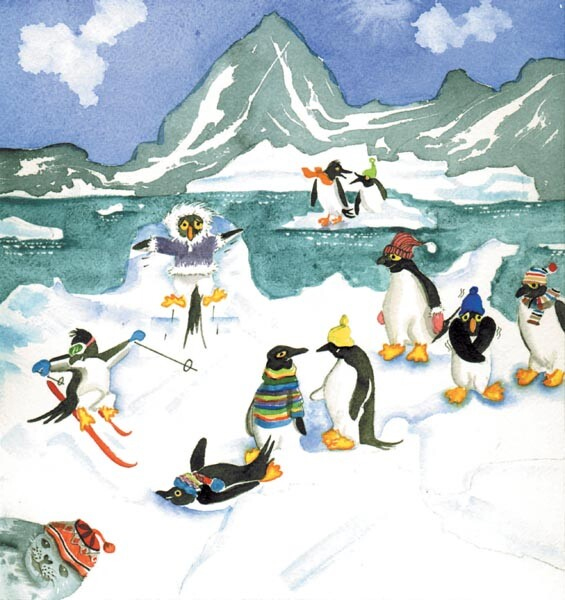
Illustrations by Denise Shaw
If traveling to Antarctica by ship, you will likely be sailing between October and March, which is considered spring through summer months around the Continent. Although most travelers assume the weather will be quite cold, temperatures range from approximately 15 degrees to around 50 degrees (Fahrenheit) during this time (-9 to +10 Celsius).
Your specific tour itinerary will dictate the variety of wildlife possible on your voyage (if including the Falkland Islands and South Georgia, for example). A brief overview is given here to get you started on your research.
OCTOBER/NOVEMBER ANTARCTIC WILDLIFE
Birders’ paradise, as breeding season commences for many seabird species, as well as key penguin species:
Also, a good time to catch lots of iceberg action, as the winter thaw is in full swing. This is the coldest period of the season, with temps hovering around 15-32 degrees F. (-9 to 0 Celsius).
If your tour operator permits, you might be able to visit scientists stationed year-round at some of the area research facilities.
Penguin activity increases through these two months, mates are matched and nest building is underway.
Fur seals display impressive mating rituals along the shores. If South Georgia is on your itinerary, expect to find courting Elephant seals.
Pack ice begins the melt-off and landscape photography is best. Kayaking also begins now and runs usually through the remainder of the season.
The Falkland Islands bloom with spring wildflowers.
DECEMBER/JANUARY ANTARCTIC WILDLIFE
If you have any Drake Shake qualms about crossing the infamous passage, this is the time for calmer seas as you make your way to the peninsula.
Seal pups abound – Leopard, Weddell, elephant, and crabeater among them.
Penguin chicks are beginning to hatch in the Falklands in December. Elsewhere the moms can be seen sitting on their nests.
These are the longest days of the season, and many will have up to 24 hours of daylight. Ice floats by and some sea ice may even allow for landings. Watch for calving glaciers!
Also these are warm months (Dec. and Jan.) with balmy temps from 29-40 degrees F. (-2 to +4 Celsius)
Whales are on the return and research studies are in full swing.
Come January, it’s Baby Time! Penguin chicks are literally everywhere – parents are on the hunt for food. Terns are hatching, seals can be seen hanging out with the folks.
Zodiac or small boat cruising is key at this time, as melting icebergs are ripe for great photos. Whale sightings and encounters increase, making it likely you’ll get up close and personal.
For those with a goal to cross the Antarctic Circle, retreating sea ice makes more attempts possible than in the early season.
FEBRUARY/MARCH ANTARCTIC WILDLIFE
Molting penguin chicks make for dirty ice, but adorable photos! Fur and leopard seal pups are playing as well.
Plankton blooms attract feeding whales in frenzies, primarily humpback, minke, and orca.
Elephant seals are now ashore, molting as well.
Days are beginning to shorten, but sunrises and sunsets intensify. Temps are ranging from 33-50 degrees F. (+1 to +10 Celsius).
The season comes to a close with adolescent penguins now exploring and beginning to swim on their own. The rookeries are emptying out and adults are returning to the sea.
If South Georgia Island is on your itinerary, still a good chance to see macaroni and king penguin colonies.
Whales are still present and algae blooms make for colorful snow and ice.
The night sky is best now, if the weather cooperates.